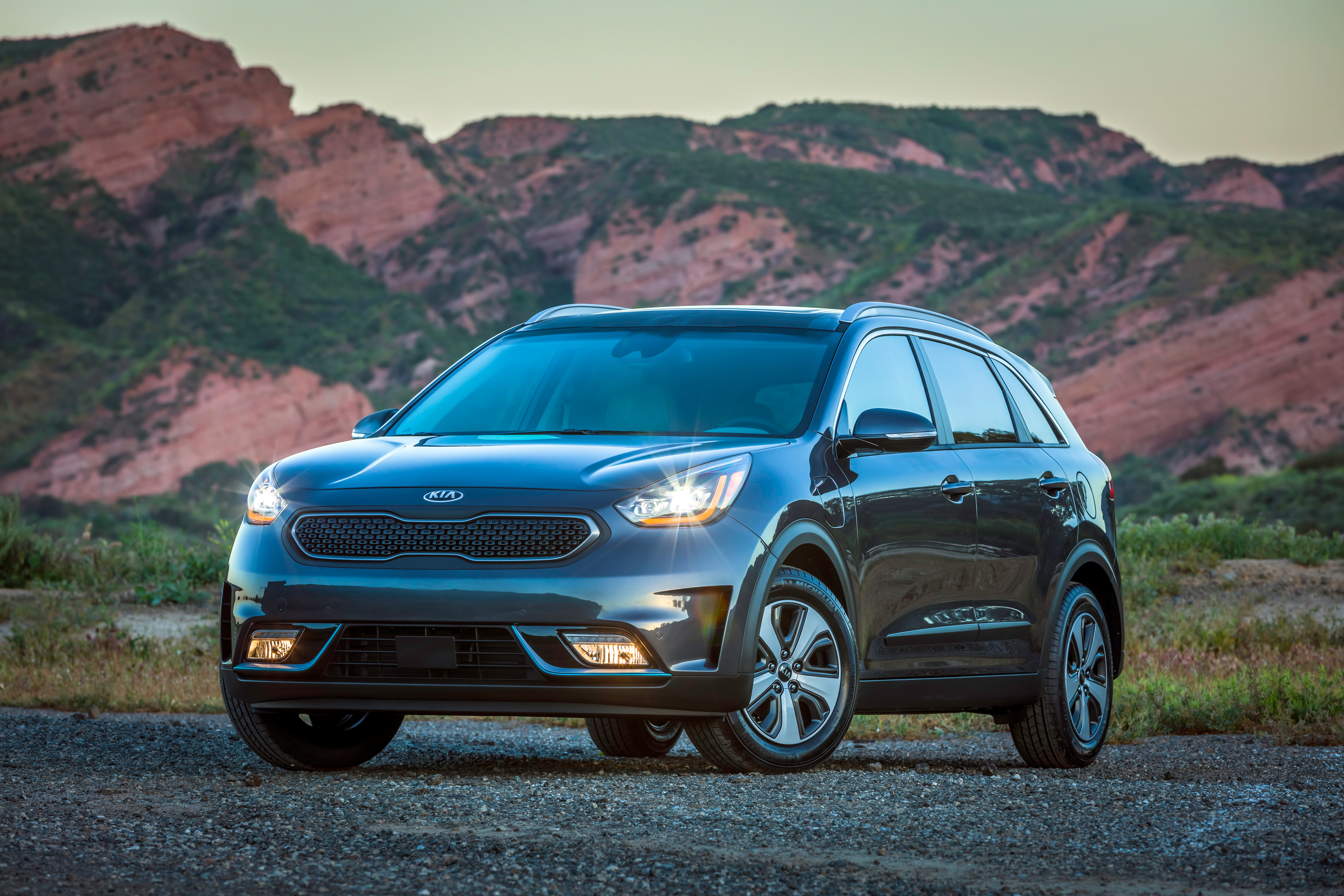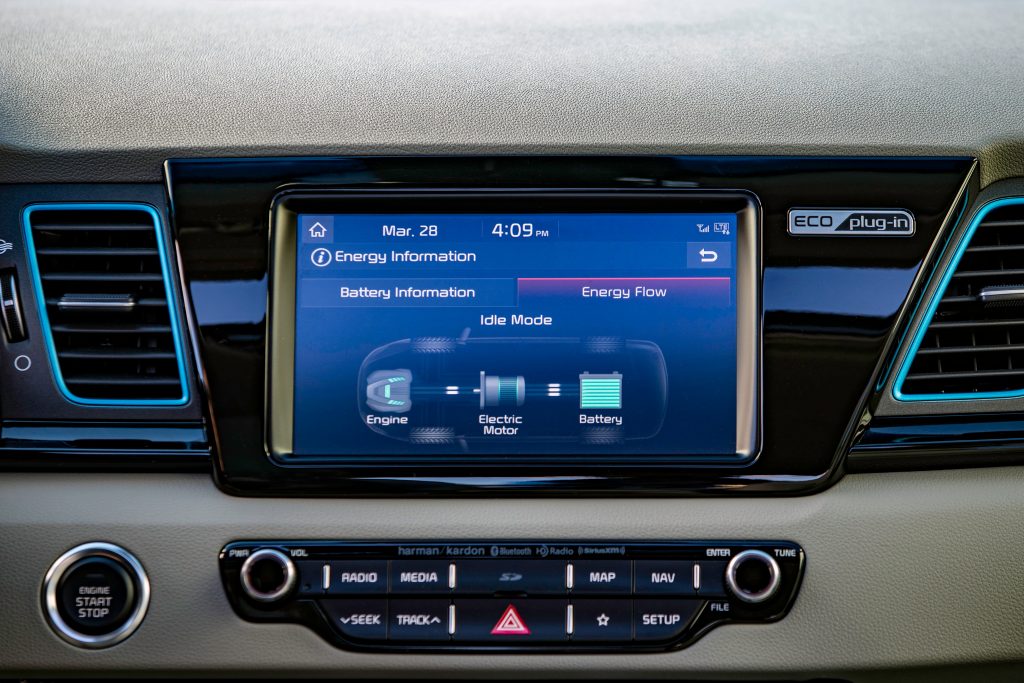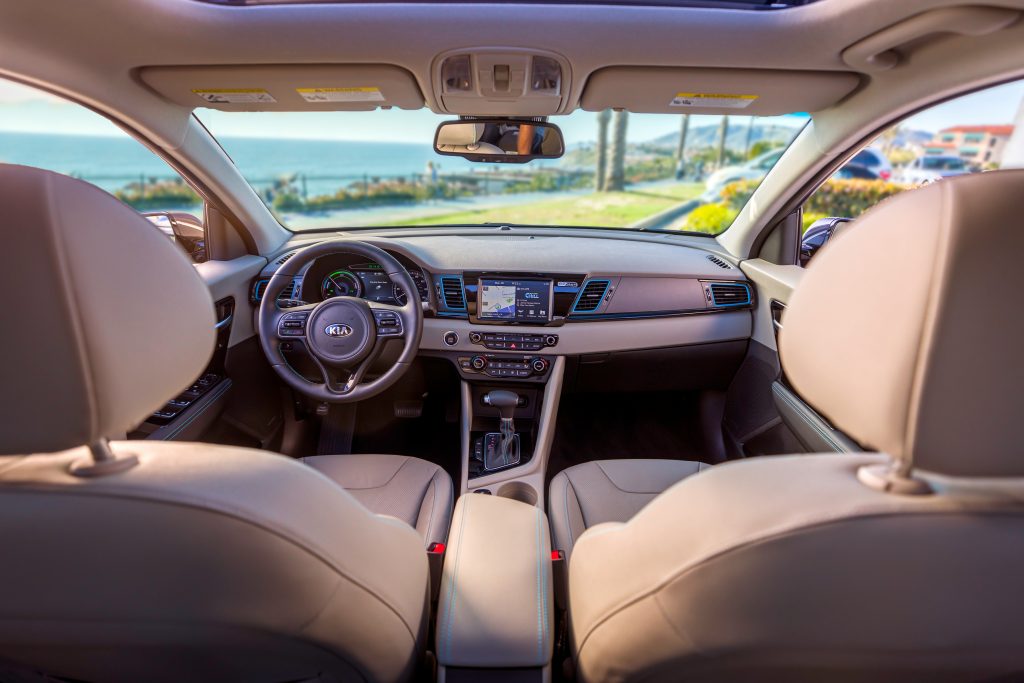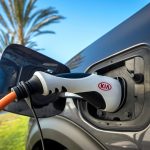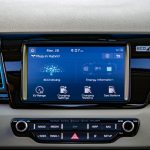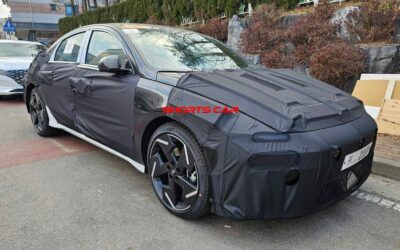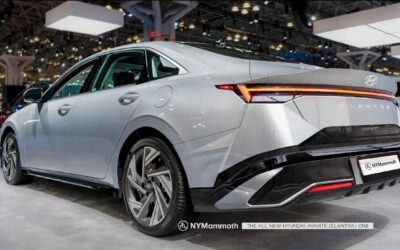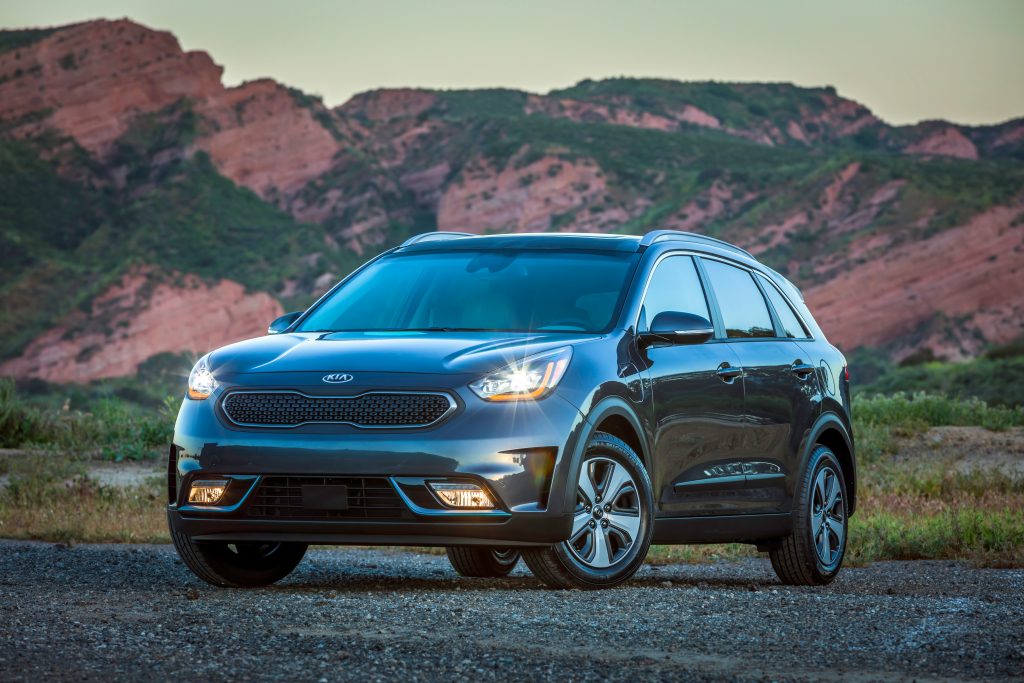 The 2018 Niro Plug-in Hybrid (PHEV) brings an exciting new dimension to Kia’s alternative fuel car line-up. As Kia’s third plug-in model, and anticipated in retailer showrooms by the end of this year, the Niro PHEV offers the same crossover utility, fun-driving and winning design of the Niro hybrid, but with an estimated 26-miles of All-Electric Range.
The 2018 Niro Plug-in Hybrid (PHEV) brings an exciting new dimension to Kia’s alternative fuel car line-up. As Kia’s third plug-in model, and anticipated in retailer showrooms by the end of this year, the Niro PHEV offers the same crossover utility, fun-driving and winning design of the Niro hybrid, but with an estimated 26-miles of All-Electric Range.
[ads id=”0″ style=”float:left;padding:6px;”]“The Niro Plug-in is the exciting next step in Kia’s progression toward offering more alternative fuel vehicles by 2020,” said Orth Hedrick, vice president, product planning, Kia Motors America (KMA). “Consumers who are intrigued by the Niro hybrid’s fantastic versatility and design, but want even more EcoDynamics technology and the ability to drive only using electric power, will find more to love in the Niro Plug-in Hybrid.”
Rated at an EPA-estimated 26 miles of All-Electric Range, Niro PHEV can help some drivers consume less gasoline in most driving conditions and in all-electric mode it produces zero emissions. And with the total driving range rated at up to an estimated 560 miles, it offers fantastic versatility. With Niro Plug-in Hybrid you can have it all—pure EV daily driving and the ability to take long road trips.
The Niro Plug-in Hybrid is yet another vehicle introduced under the Kia Motors EcoDynamics sub-brand and represents an important next step on the path to nearly tripling the brand’s global lineup of alternative fuel vehicles by 2020, which includes the Niro, Optima Hybrid, Optima PHEV and the Soul EV. The new Niro Plug-in Hybrid offers all the same feature-rich packaging and driving fun of the hybrid Niro, but with a few PHEV-exclusive touches, such as a subtly-modified front grille insert and surround, hybrid blue exterior accents, available LED headlamps, a charge port door (on left front fender), available 7-inch color meter cluster with digital tachometer and “ECO/Plug-In” badges.
Efficient and Engaging Powertrain
The Niro PHEV pairs an all-aluminum, efficient 1.6-liter GDI (gasoline direct injection) four-cylinder engine with an 8.9 kWh (59 kW) lithium-polymer battery pack and a powerful 60-HP (44.5 kW) electric motor, a set-up for optimum fuel efficiency and electrically driven range. While the Niro PHEV boasts an MPGe rating of 105, its EPA-estimated MPG ratings of 48 mpg city, 44 mpg highway and 46 mpg/combined are similar to those of Niro hybrid. The estimated driving range when both electric and gasoline systems work together is up to 560 miles.
[ads id=”0″ style=”float:left;padding:6px;”]Increased high-voltage battery capacity (+7.34 kWh more than Niro hybrid) and output/power have helped make the Niro Plug-in Hybrid an efficient, low emissions crossover with a 105 MPGe rating. The Niro PHEV’s compact, high voltage battery is neatly tucked under the cargo floor and under the rear seat and maintains the same spacious cargo capacity as the Niro hybrid. A single charging port is located in the driver’s side front fender. A full charge can be achieved in approximately 2.5 hours via a 240V (Level 2) charger, and under 9 hours via a 120V (Level 1) charger.
The Niro PHEV employs the same six-speed dual-clutch automatic transmission (DCT) as the Niro, which translates to more enjoyable and engaging driving. Drivers can choose from several driving modes, including EV mode, Hybrid mode, (default) Eco mode, or Sport mode for quicker transmission response that takes advantage of the powertrain’s combined output of 139 horsepower and 195 lb.-ft. of torque.
Another notable energy-conserving feature is the Driver-Only Air Conditioning, which directs the ventilation toward the driver only and decreases the power consumption of the air conditioning system.
Strong and Light Core
The lightweight structure underpinning the Niro Plug-in Hybrid is built on the same dedicated platform as the conventional Niro, utilizing over 50 percent Advanced High Strength Steel (AHSS). Extensive use of hot-stamped steel components and industrial joint adhesive aims to increase torsional rigidity and improve structural integrity. Kia is targeting the Niro and Niro PHEV to earn top honors from the National Highway Traffic Safety Administration (NHTSA) and Insurance Institute of Highway Safety (IIHS).
Weight reduction was a critical aspect of developing the Niro PHEV, so in addition to the body, AHSS was also used to engineer other elements including lightweight seat frames. Engineers were also able to reduce overall weight by using aluminum for the hood, tailgate and several suspension elements including the front lower control arms, front and rear knuckles, and in the brake calipers.
Feature-Rich
Like the Niro hybrid, the Niro PHEV seats five and offers the same great crossover functionality and generous cargo capacity. The Niro PHEV will be offered in three trim levels—LX, EX and EX Premium.
In addition, the Niro PHEV is offered with a suite of advanced driver assistance and convenience technologies, including Blind Spot Detection (BSD) with Rear Cross Traffic Alert (RCTA), Lane Change Assist (LCA), and front and rear parking sensors; while Smart Cruise Control (SCC); Autonomous Emergency Braking (AEB); Forward Collision Warning (FCW) and Lane Keep Assist System (LKAS) are all standard.
The Niro Plug-in Hybrid also includes UVO eco which extends Kia’s award-winning connectivity service by offering convenience and safety features tailored to eco-minded drivers. With UVO eco, drivers can remotely monitor and charge their vehicle’s high-voltage battery; setup charging schedules to take advantage of off-peak utility rates; preset the vehicle’s cabin temperature, turn on window defrosters, and heat the steering wheel, lock or unlock doors, and find their vehicle from their smartphone or web enabled device.
- 2018 Niro Plug-In Hybrid
- 2018 Niro Plug-In Hybrid
- 2018 Niro Plug-In Hybrid
- 2018 Niro Plug-In Hybrid
- 2018 Niro Plug-In Hybrid
- 2018 Niro Plug-In Hybrid – Home

